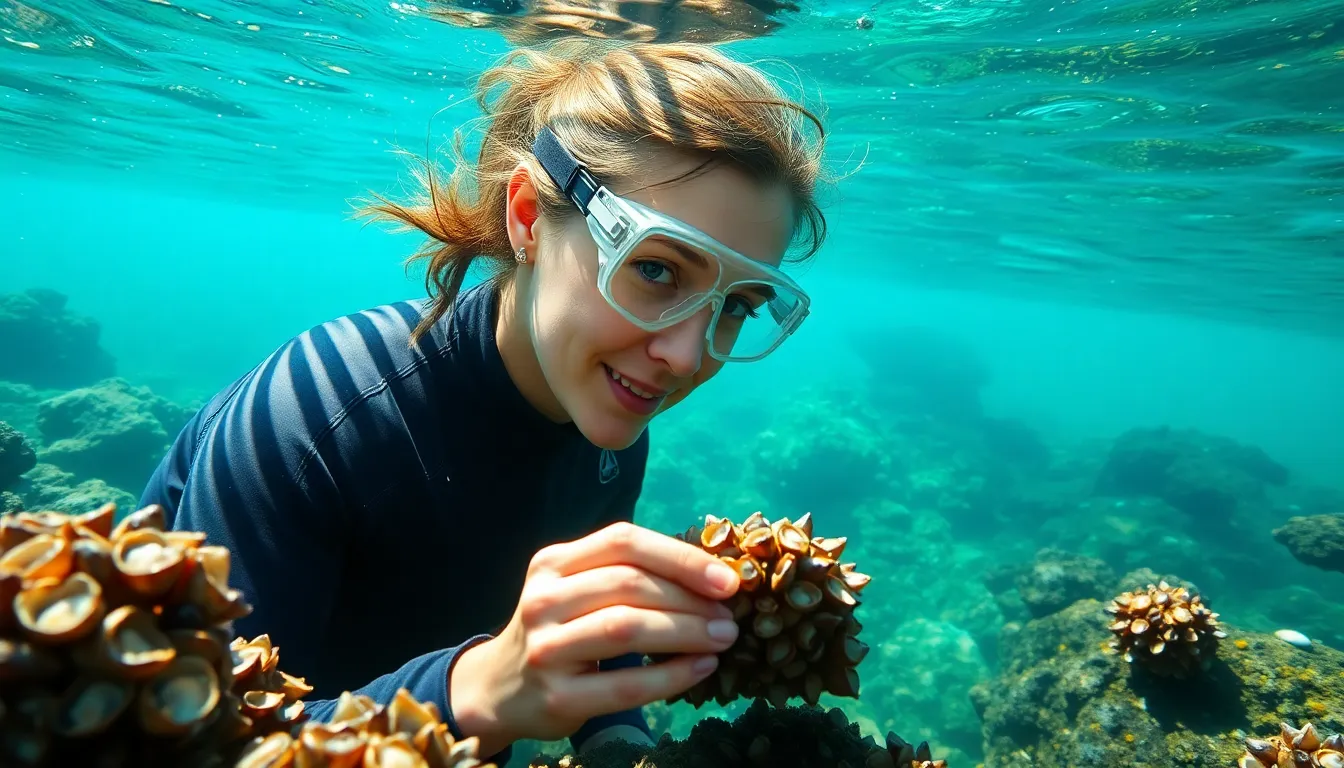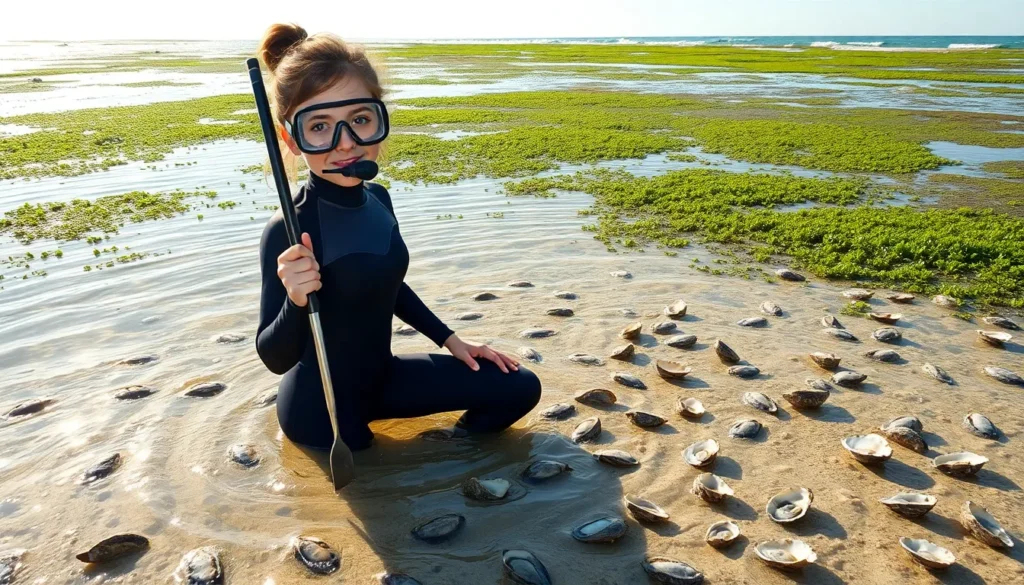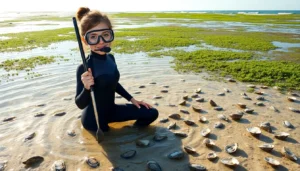Table of Contents
ToggleIn a world where the mysteries of the ocean beckon, few professions dive deeper than that of an “ostropologe.” This intriguing field combines the art of exploration with the science of studying oysters and their habitats. Imagine a job where you can don a wetsuit, wield a spatula, and get paid to uncover the secrets of these bivalve beauties. Sounds like a dream, right?
What Is Ostropologe?
An ostropologe specializes in the study of oysters, examining their life cycles, habitats, and ecological importance. This unique profession combines fieldwork and scientific research, allowing for both exploration and inquiry. Research often involves collecting and analyzing data on oyster populations, including growth rates and health indicators.
Fieldwork usually takes place in coastal and estuarine environments, where the ostropologe engages with the ecosystem. They often use specialized tools, such as a spatula, to gather samples. Diving in various water conditions can also be part of their routine, increasing their understanding of different oyster species and their habitats.
Monitoring the impact of environmental changes on oyster populations forms a critical part of the work. Ostropologen assess threats like pollution, overfishing, and habitat destruction. They play an essential role in conservation efforts, often collaborating with marine biologists and environmental organizations.
Education and outreach also constitute important aspects of the profession. An ostropologe shares knowledge with the public and stakeholders about oysters’ ecological roles and the significance of maintaining healthy marine environments. Workshops and presentations often feature their findings, contributing to broader conservation awareness.
Career paths in this field often require an academic background in marine biology or environmental science. Graduate degrees, along with field experience, significantly enhance employment opportunities. Aspiring ostropologen can find fulfilling careers in research institutions, government agencies, or non-profit organizations focused on marine conservation.
The History of Ostropologe

Ostropologe is an emerging field focused on the study of oysters and their ecosystems. This profession combines exploration and scientific inquiry, significantly influencing marine conservation efforts.
Origins and Development
The origins of ostropologie trace back to the early 20th century. Marine biologists first recognized the ecological importance of oysters. Development gained momentum as environmental concerns grew during the late 20th century. Researchers started assessing the impact of pollution and overfishing on oyster populations. Collaboration among scientists led to the establishment of specialized programs aimed at oyster conservation. This specialization fostered a comprehensive understanding of oyster life cycles, habitats, and role in marine environments.
Key Figures in Ostropology
Several influential figures shaped the field of ostropologie. They include renowned marine biologists and conservationists. Significant contributions arise from individuals like Dr. Sylvia Earle and Dr. Robert Paine, recognized for their work on marine ecosystems. Their research emphasizes the importance of preserving oyster habitats. Today, ostropologen collaborate with government agencies and non-profits to drive further advancements. These key figures inspire a new generation of researchers focused on marine conservation. Their dedication highlights the critical role oysters play in maintaining healthy marine ecosystems.
The Significance of Ostropologe
Ostropologe play a crucial role in understanding the complex relationships within marine ecosystems, particularly regarding oyster populations and their environments.
Cultural Impact
Oysters have influenced various cultures worldwide, serving as a source of food, art, and tradition. Many coastal communities celebrate oysters through festivals, showcasing local dishes that highlight their culinary importance. Oystering traditions, often passed down through generations, reflect deep-rooted connections to marine resources. These cultural practices promote awareness about marine conservation efforts and the sustainability of oyster habitats. Consequently, ostropologe contribute by preserving this cultural heritage while advocating for responsible harvesting practices.
Contribution to Science
Ostropologe significantly advance scientific understanding of marine ecosystems. They gather critical data on oyster life cycles, reproductive habits, and ecological interactions with other species. By conducting experiments and analyzing environmental factors, they identify threats such as climate change and habitat degradation. Collaboration with marine biologists enhances research findings and fosters interdisciplinary studies. These efforts support conservation initiatives aimed at restoring and protecting oyster populations. Their contributions lead to better policy decisions, ensuring healthier marine environments for future generations.
Current Trends in Ostropologe
Ostropologie continues to evolve with new research and ongoing commitment to marine conservation. The profession adapts to environmental challenges, helping safeguard oyster populations.
Research Innovations
Innovative research techniques improve data collection and analysis in ostropologie. Advanced technologies, including underwater drones and remote sensing, facilitate habitat monitoring. Genetic studies enhance understanding of oyster resilience and adaptability. Collaboration among scientists leads to novel conservation strategies, promoting biodiversity. These advancements support better management practices, ultimately benefiting marine ecosystems.
Future Directions
Future trends emphasize sustainability and ecological restoration in oyster habitats. Increased focus on climate change impacts aims to identify adaptive solutions. Engaging coastal communities plays a crucial role, fostering stewardship and awareness. Educational programs target the next generation of ostropologen, ensuring a dedicated workforce. Expanding partnerships with organizations enhances research initiatives, pushing for stronger conservation policies.
The role of an ostropologe is essential in preserving marine ecosystems and understanding the intricacies of oyster populations. Their dedication to research and conservation not only enhances scientific knowledge but also fosters community engagement and awareness. As they navigate the challenges posed by environmental changes, their innovative approaches and collaborations will continue to shape the future of marine conservation. By inspiring new generations and advocating for sustainable practices, ostropologen ensure that the vital contributions of oysters to our oceans are recognized and protected for years to come.







